I spent most of last week on an art residency. For those of you from other walks of life, this is where you are invited and sometimes paid, to go away from home and make your art, often in response or relation to some aspect of the venue, people or institution that invite you. I had only once been on a short residency before, to Knockvologan on the Isle of Mull four years ago, when I was still not recovered from the events that forced me from river life. So, it was good to be hale and hearty to head east to the Imaginal Field. I am continuing research for a chapbook grown from this writing, hopefully with illustrations or photos, as well as making some music with the bass guitar that came back from Cambridgeshire with me, thanks to Karen, one of my hosts. This week’s piece for you is gleaned from a long-overdue return to longhand writing, one of the many gifts that the residency gave to me.1 2
This post is too long for email, so click on the title to read the full piece online, or listen to it, and catch up on the footnotes and ‘This week’s good thing’ afterwards.
A field in England
Perhaps it's easier to sit a 7-day Zen retreat. My mind, stripped of all stimuli but my body and a blank wall, quickly quits struggling and at least attempts to settle to the task at hand; counting breaths, say. I am in a field, constantly stimulated, yet rebuffed, a whole day here and I am only at the surface, on the grass, looking down from human height.
The East Anglian sky stretches dusty blue in every direction, an east wind blows all the pollen of Cambridgeshire into my eyes and nostrils, so that two different types of antihistamine alternated every 12 hours fail to stem the tide of phlegm my nose produces. Having used up all my tissues in the first 24 hours here, I take a roll of toilet tissue and begin my art residency by making industrial quantities of artisanal papier mâché.
I choose the shade around the shepherds hut at the farm end of the Imaginal Field. Un-hatted and with pale skin not yet sunned, I skulk in the shade of the wooden box in lieu of the live-wood shade of trees. There are no trees. I don't know that it's a surprise exactly, as this is an arable field, rewilding as of two years, drilled, planted with wild flower seed and edged with hedgerow plants, now just about a foot high.
At first, it feels as though there is both too much and not enough on which my mind or gaze can alight. The thought that perhaps I'm just a ‘forest person’ comes into my head unbidden. I scratch my head, moving suddenly, and startle a cock pheasant tucked in the plants twenty feet off. He flies off across the next field. Artemisia vulgaris3 is beside me leaning over the edge of the platform made of railway sleepers towards a huge thistle, like an aunt in her back garden, awaiting gossip, which is to say; news.
I am at what my mother used to call ‘a loose end’. An apt analogy: untethered, flapping around, seemingly unable to fix to anything. Yet, I have written many pages in longhand, using my everyday favourite fountain pen. Rather than blinking at me from a screen inside a room, thoughts arrive in ink as I sit sniffling outdoors. Words come slantwise, blackening each lined cream page of my ‘Uncivil Savant’ note book, with a faint scratching sound. It’s not unlike the noise the wasps make as they chew wood to make paper for their nests, uncannily amplified by the giant wooden cable reel beside me, when the breeze dies down long enough to hear them.
When I was a child I loved to count things and put them into groups, coloured reels of cotton, buttons, Lego, shells. Fibonacci and Pascal, Mendeleev and Venn were better than imaginary friends. As much as a genuine interest in science, it was also a way to control and manage things: fears, anxieties and not-knowing, mainly. Today, at a loose end walking the field, I began to count the five-ness of mallow petals, the six-ness of vetch spirals, the two-ness of sainfoin leaf pairs. I was just about to start counting the whatever-number-ness of the ox eye daisies, when I caught what my mind was really doing; trying to find something to alight upon, to find a perch above the field. I was ‘paying very close attention to not quite the right thing’, as my T’ai Chi Grandmaster John Kells used to say. One could spend a lifetime doing that, and thereby waste it entirely. ‘But, sacred geometry!’ my inner kid said. Ah, but there's lovely books on that already, and this is not my work to do today in this field.
The painted lady butterflies do that dance in the air in front of me and to my shame I don’t know if they're courting or fighting.
It took the whole day to stop telling myself off for not being able to sink into this place despite appreciating it on so many levels - colourfully, ecologically, symbolically, historically. I am floating here on the surface of this field; literally, because I am on a wooden deck, as well as energetically (or perhaps metaphorically) becalmed, as though at sea. This is how I felt in the American Midwest many years ago amongst the vast prairies and fields of that continent.
One rook is now on the telegraph wire, the birds that had been on their favourite stretch have flown away. The evening wood pigeon calls have begun, a slightly different cadence from those where I live. At 5:00 PM pigeons arrive in their hundreds and take to the wires to sit closely together. I move around to the steps of the hut into the shade, just as eager to find my own perch.
How to begin
I'm using my late friend Mark Watson's beautiful book The Plant Pamphlets as a guide and method for being here. Starting last night and finishing this morning I reread his book cover to cover and reminded myself of the simple but effective ‘hanging out with plants’ practice which is found within it. This morning after breakfast, I headed out into the field and walked around until I felt a particular plant calling to me to pay it my undivided attention. If you've never walked around anywhere noticing whether a plant, landform or rock is asking you to communicate, then you'd be forgiven for assuming that it's an outlandish4 practice and that I am officially woo. But I know you will have stopped to notice a pavement dandelion at some point in your life, the craggy beauty of a winter oak, or the sheer spiky effrontery of a bramble shoot thick as your thumb making its way through a fence, up into the elder tree and back down again, laden with pink flowers of blackberry-promises. You will at least have stopped for a rose.
This calling, this coming-into-relation, you could call it ‘paying attention’ if that feels better, or playing as-if the plant could speak. I did enough years of as-if to realise that that particular linguistic mind-fence was, at best, me hedging my bets and, at worst, enclosing a minefield of duality. So, back to the field and the ‘hanging out’. You don't need to know the name of the type of plant to spend time with it, in fact, knowing lots about a plant can sometimes be a hindrance.
A rewilding field that is two years old like this one is not ‘wild nature’ any more than a garden is. It is the accumulation of lifetimes of agrarian decision making, followed by Jeni’s radical, heartfelt wish to create a biodiverse site, which is indeed just beginning to happen. It is no wonder I felt not at all unwelcome yet very much a visitor. I am no farmer and I am almost never in fields. Shores, woods, riversides, islands - yes, but never flat land with big skies and no shade. The freight train goes by pulling yellow containers while the orange rust of the curved barn roof draws my eye to its man-made ochre. I go to sit in the shade of the small ash tree near the top edge of the field, but a ditch of whispering reeds is between us. ‘This is not the place to sit,’ I say out loud. So I return to the bow of my boat / hut with the ox eye daisies swaying in the breeze like white caps on the Solent in light airs.
Vetch-a-sketch
I pull out a sketchbook and begin to make a few little studies, just like the old days. I have a pencil in hand and a lovely, handmade paper sketchbook to work in. But no, whether a tiny life-size sketch of vetch, or a colour study of birds on the wire using paints made of malachite and lapis lazuli, pigments I had laboriously ground myself, this method of relation is not to be. I feel like I turned up at a poetry slam wearing a beret with an easel and oil paints under my arm. That word ‘artist’ is a tricky one, eh?
Depending on the angle of the sun in relation to my eyes, the belly of a swallow in flight can change from black to white. An interest in the underside of things is essential if we are to do more than glance off the surfaces of life.
The minute I relent and decide to stay with the trouble5, I am welcomed back into the world one longhand word at a time. The voice in my head is no longer admonishing, but instead is communicating with you, dear reader, and I hope with and from the Field, too. Or at least the underside, context, flotsam, associations and perturbations of the Field; as it is after all the Imaginal Field, and as I write this, it fills my imagination fully and my body responds gladly until my hand cramps.
I have been writing for hours. The mugwort is still brushing against my bare leg and nodding in the breeze that clips the northeast corner of the hut. I see that I do not have time for a full Plant Practice before dinner with my hosts, as this would need 20 to 40 minutes with the plant, a similar amount of time to lie down quietly and let the impressions and messages (if any) of the visit become clear, and then time to write or draw it all down. I don't mind. A man on a sit-on mower is motoring behind me now and cutting the paths in the meadow. I say to the mugwort, ‘May I take a leaf back to the tiny home and put you under my pillow for dreaming?’ Feeling a ‘yes’, I choose a leaf, gather my things and head back to the garden. ‘Shall I ask him to stop mowing?’ a woman in her car asks, ‘Is he disturbing you?’ ‘No not at all! It's time to stop anyway.’
The mugwort leaf waits in water until bedtime. I sit and consider how I am with two year old humans, even the offspring of beloved family or friends. How I am is interested and warm but not really engaged, not down at their level, engrossed in their games, following what they're up to. It’s almost a joke in my family, I am always looking forward to the time, at about 8 years old, where we start to ‘get’ each other and we can go gather nettles for cordage, make drawings together or play word games. I watch my now adult nieces and nephews play with any and all babies and puppies too, and I'm delighted that they feel drawn to do so even while I don’t. Today in the Field I felt a similar feeling; I was sad at first but then, accepting myself and the Field as we were, in that moment dropped into a more honest relationship. Warmth and prayers for the growth and health of the young / old field flowed out of me and into the lush green, chuckling at myself being that awkward aunt again. I picked up my pen: ‘Stay with the trouble!’ ‘Start where you are!’ the wise women exhort us. Yes, yes, and expectations will stiffen any such moves, sure as a sprained ankle.
So I sit, watching thoughts arise, only, unlike in a retreat, I write them down to save or to share. In doing so, I begin to see the very tips of the shoots poking through the soil of what a residency could be. A Vipassana retreat or sitting Zen with my mind brought back for the 100th time to the present moment is not a million miles away from a way to write or to make art this hot day in a field in England.
Sails
Friday the 13th of June 2025: my book is published today. A heron flies over the end of the garden and is the first thing I see when I open the tiny home’s door. The gift of blue clay from a disused brick pit sits in a bag at my feet. As I walk its paths and perimeter I ask the Field what its dreams are. White campion says, ‘Trumpet good news!’, ‘Pure of heart,’ and ‘Amplify beauty!’
Skylarks sing, wind turbines whistle, the train klaxon blares. We make all these beings do what we want - crops, horses, even ourselves. I find out what wild flower species were planted here and how they were drilled. I write down what crops once grew here. What do you ask a field that has been on four-year crop rotation for as long as can be traced? What do you want to be, to do, Field? How do you want to grow? Who am I connecting with here? Earth? Soil? Community of plants? Is it solo or plural?
I'm reminded of child-minding my eldest nephew when I was in my teens and he was about 18 months old, (the same rewilding-growing age as this field). Of course I loved and still love him, and I took great physical care of him, feeding him, playing and making sure that he had what he needed. But we did not quite connect. Although absolutely fine, we were neither of us totally happy about the situation we found ourselves in and were glad each day when his mum came home. That time rarely ever pops into my mind but here, this week, it has and there is a bodily sense of relief in recognising something. I am visiting a young child in terms of its growing, vegetal, biome. In terms of the newly free life of its soil, I am visiting a compacted, extracted, ploughed, ‘fertilised’, utilised-for-centuries piece of land. Bought and sold, drained from the abundant wildlife haven of ancient fen (wetland) Whittlesey Mere, this place was made useful and profitable to men, sunk below sea level, and the birds, amphibians and unique plants of this once watery place mostly went extinct. Only now is this tiny parcel able to just be, albeit in a new, much drier form.
I sit back on the wooden deck which really is afloat on what was for centuries a shallow sea, once the largest lake in Southern England.6 Ahead, at the foot of a slight rise of the dyke, what looks like a small sailing boat in outline shimmers. A wooden dinghy with a mast strung with white bunting, a ghost boat, going nowhere, looking both jolly and forlorn, to the side of the animal rescue farm. Am I seeing it right? I will go and look.
This field was bought in an auction at the local pub, The Vine, in about 1980. Jeni's dad Owen told Jeni’s granddad to stand at the front and put his hand up, and keep it up until they won the bid. Jeni's granddad was shy by nature but he did what he was asked. Their pig farm was right here and it made complete sense to purchase the field beside it. Other local farmers had clocked that they wanted to buy the field, informal words were had in seemingly unrelated conversations when meeting on the road. Gentleman's agreements stood firm. Neighbours did not bid against the men, there were always other fields coming up for sale.
This place is no longer an edge place, like a shore, a riverbank, the foothills of a mountain, or the outskirts of a town. This is the heart of the bread basket of England, and it is as itself as The Wash or the North Sea. Jeni is so from here. As we drove in, she said how she loves going away to the rest of the country, the interlocking hills and valleys of Devon, say, but when she comes back home to the flatlands, even the layout of the streets just makes sense. ‘It's clear and straightforward,’ she said, ‘you know where you are.’ For me, an almost-West-Country-woman who was once a 5-minute-cycle-to-the-beach-girl, such unequivocal land-ness is odd. When I lived in the heart of rural Aberdeenshire, I was probably in a comparable position but due to the endless demands of building a recording studio and hosting so many people and bands, it meant that in practise I mostly ignored the land while I was there. Except on rare visits by Stewart Lee to see the stone circles on hills ringed with trees.7
Campion flower asks me to amplify beauty and prompts me to read William Morris. To be pure of heart and to give my all, even in the midst of things and forces far bigger than me. The Imaginal Field Project asks so many questions of the land itself, not just those of us invited to come here. As the mycorrhizal connections form below the Field and mycelium can begin to develop, now that ploughing has ceased for at least five years, who knows what will grow? Will blackberry seeds in bird droppings begin their fierce custodial duty of nurturing rowans and birches? Will ash keys germinate within the new hedging?
Ways in
Karen works in the hut with a map of a tiny corner of Shetland, her home for 20 years, to write down and through the tragic story of two of her ancestors. Shetland is also a place with few trees and only low hills, but is as different to here as is London. How to be here, or indeed anywhere, when one’s body and the land can't yet converse? Gardening? Doing good by all the beings? Starting with something you recognise: hawthorn, plantain, perhaps familiar from your home place. On my first night here, Karen placed a dozen plastic bags of gloriously varied Shetland earths, ochres, clays and coloured rocks on the kitchen table and we were all transported north to other geologies and histories. It was all I could do not to scoop up handfuls and settle into pigment making, like putting on a favourite record. I knew it wouldn’t help me settle into the land where I was, however. So I waited, then felt welcomed here by nettle, poppy, reed and mallow as I headed back to my nest for the stay, a tiny home at the bottom of the garden. Sleeping beside huge hazel leaves and nibbling ripening mulberries softened the flatlands’ strangeness for me. They were my way in.
Now, awaiting an hour cool enough to go back into the Field, I sit in Jeni and Karen's garden on a bench under a hazel tree, looking out towards the Field, which is just out of sight. I can feel it, though, and see it clearly in my mind's eye with ox eye daisies frothing just as much as did last night's elderflower cordial. In front of me are a walnut tree, climbing roses, wisteria, lilac, holly, euphorbia. In the heat, I am forced to just be as I am and one hundred metres away the field is just being itself too. Farm cats and blue bottles, fledgling wrens and a hover fly pass by. More insects than I've seen in a very long time hang in the air in front of me on their inscrutable business.8
The Imaginal Field is a manifestation of hope and creativity. ‘What kind of world are we bringing children into?’ my friends and family who have (or plan to have) children ask themselves. It’s the same world that Jeni and Karen are bringing the Field into, one with infinite possibilities and challenges which we cannot know, yet must respond to with guts, ingenuity and sackfuls of seeds.
This week’s good thing: My new book Drawn From the Wild is now published and out in the world! If you’d like a signed, dedicated copy directly from me, drop me a line here, and I’ll let you know the postage costs to where you are. By the way, in the front of my book is a paragraph I asked my publisher to add, stating that I did not use AI in the book’s creation. More about that, and LLMs in general, another time soon.
My books and works on Substack are human-made and no AI is used in creating the writing or art for them. If you’d like to leave a comment but cannot afford a paid subscription, just reply to this email and I will comp you 6 moths for free.
I cannot thank Jeni, Karen and the Field enough for their hospitality, conviviality and welcome. To be around the table each day with them and the visitors was a joy.
If you have not yet watched the superb film A Field In England, then please do. It is not related to this piece directly, but it made such an impression on me when I saw it, accidentally, late one night on Channel Four, that I am not sure I have ever seen a English field or thought of history the same again since.
Also known as mugwort.
It is actually a landish practice.
So much richness in the story of this place and others like it in the world can be found in Annie Proulx’s masterful, slim volume Fen, Bog and Swamp
which is a good thing, given the recent news of insect population collapse.





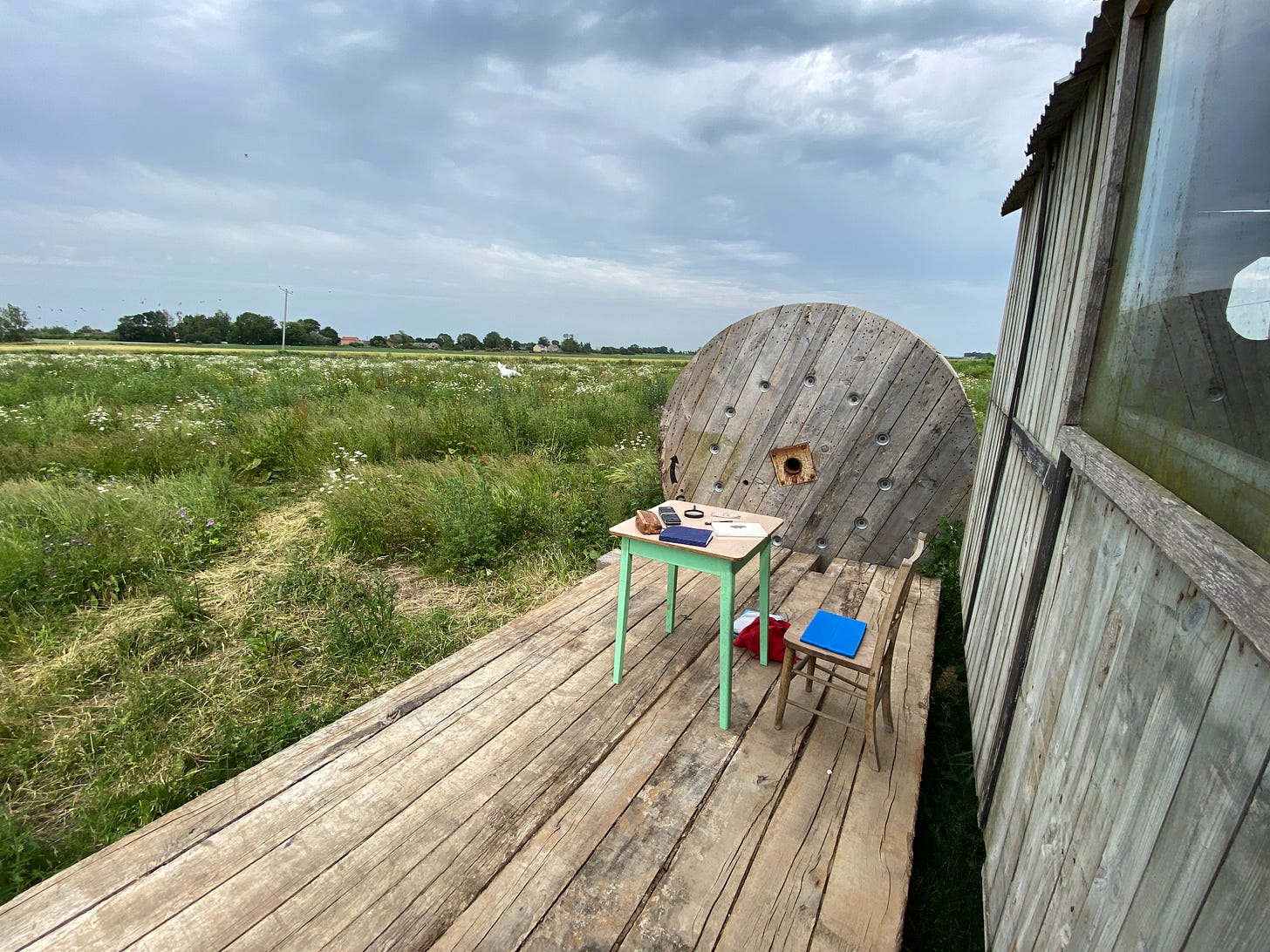
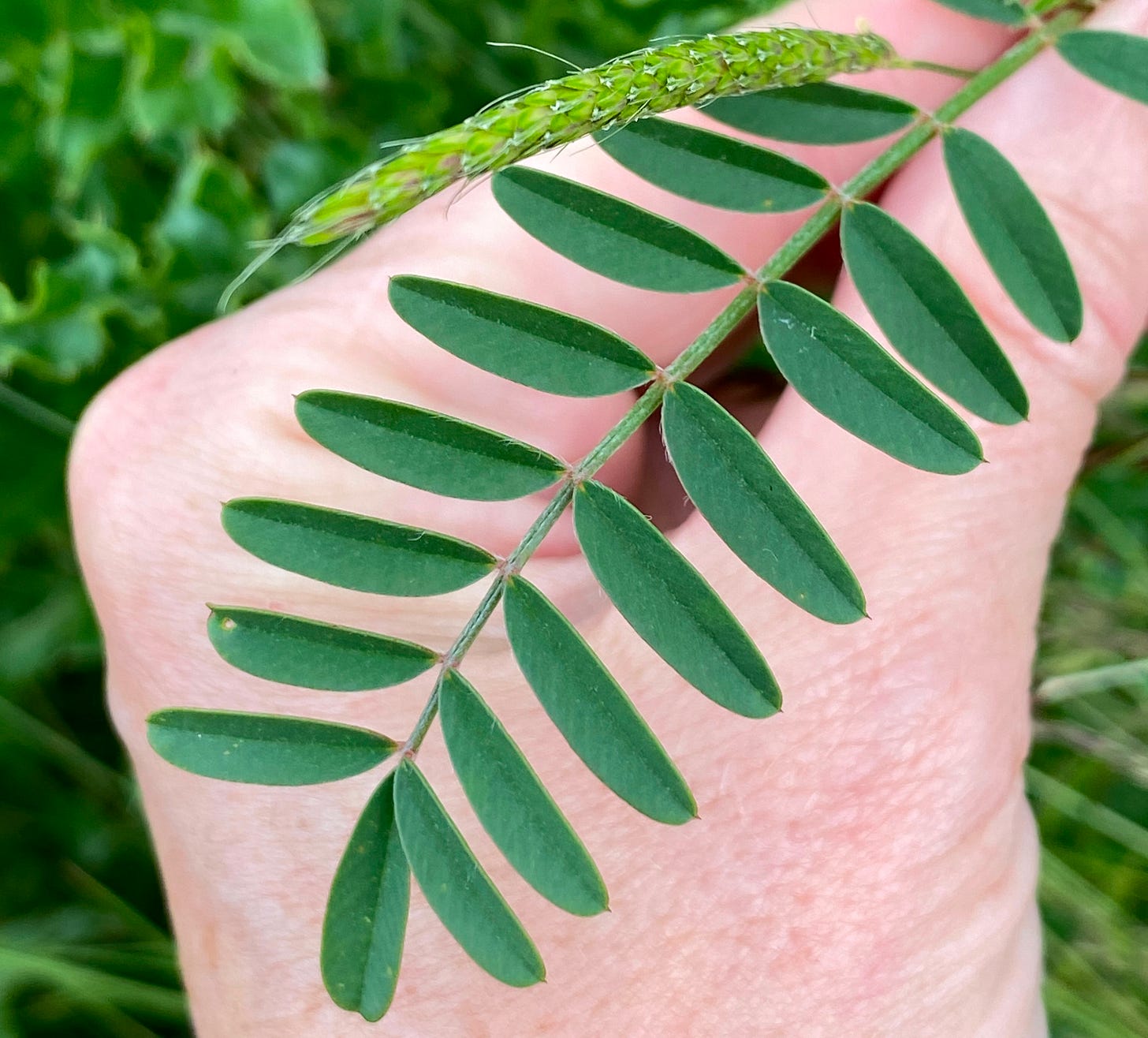
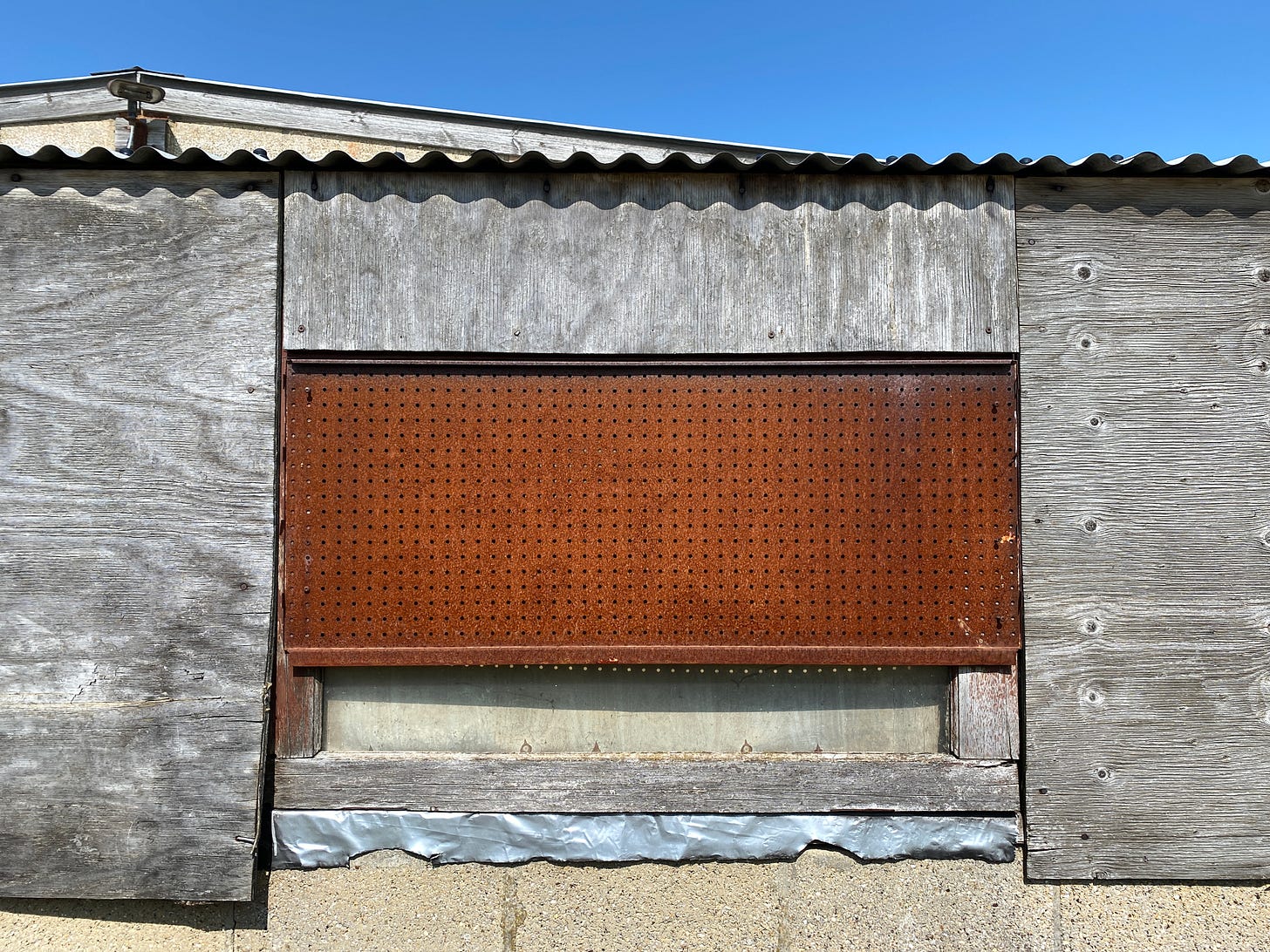

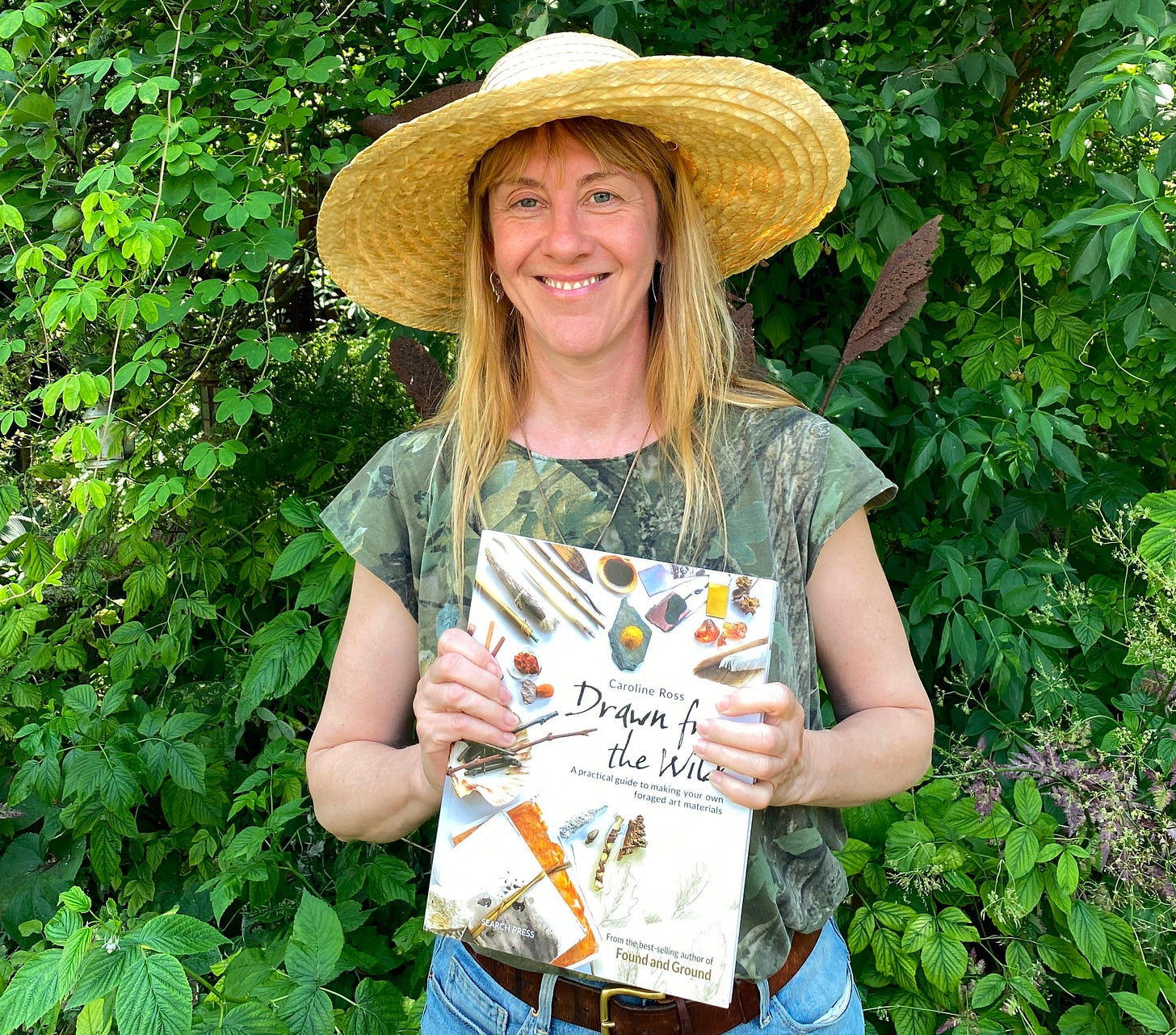
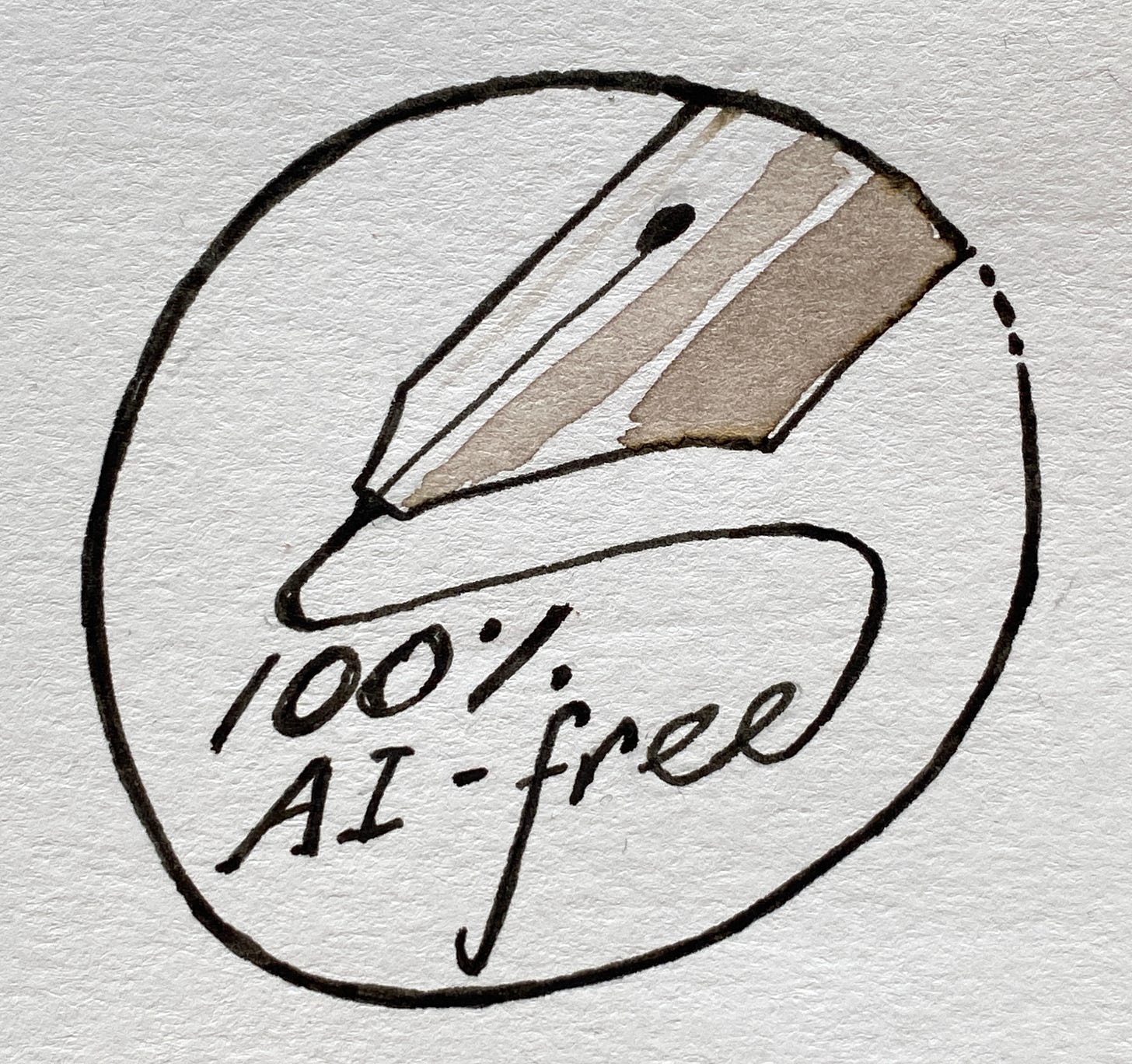
Your essay transported me…to Imagínal Field, and to my own experiences of getting to know a place through its geography, plants and food.
It occurs to me that the connection and conversation you describe which takes 20-40 on the field (taking in) then again in silent meditation (digesting) then again in sketching/writing ( expression) is a highly concentrated process, which most people experience semi-consciously over weeks or years of being in a Place. How beautiful is the way you do it so consciously, intensively, and lovingly, and how you share that experience with us.
Im temporarily living in the suburbs with very little nature, and your essay has inspired me to try again to find the spirit in this place…for surely it must be here, even it’s not used to people seeking it.
I read many of your posts and find them most illuminating and inspiring! All the best!
Oh, such words and thoughts and ways of being. Thank you for all the thoughts which are particularly resonant as I spend this time in a new piece of land -- noticing smells and textures and trees and plants and birds and shifts of light, practicing just that thing of being there and and listening for what it is mine to hear and learn. Such a practice.
Also--huge congratulations on the release of your book into the world.